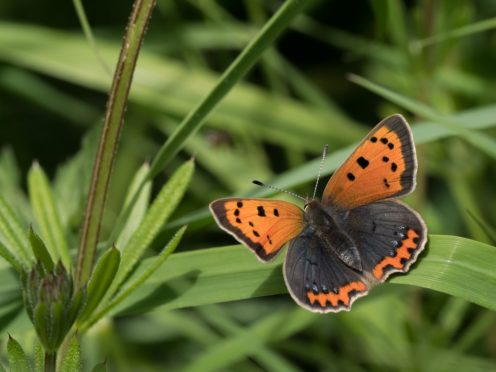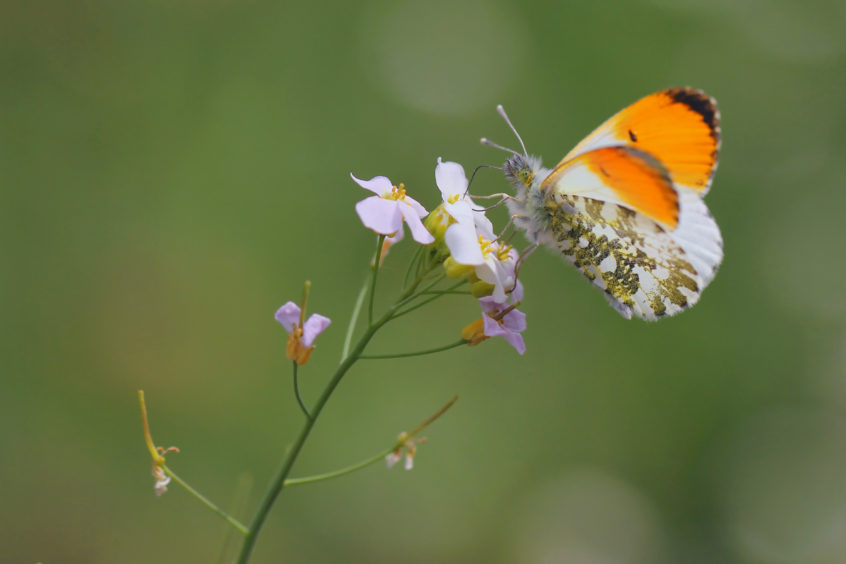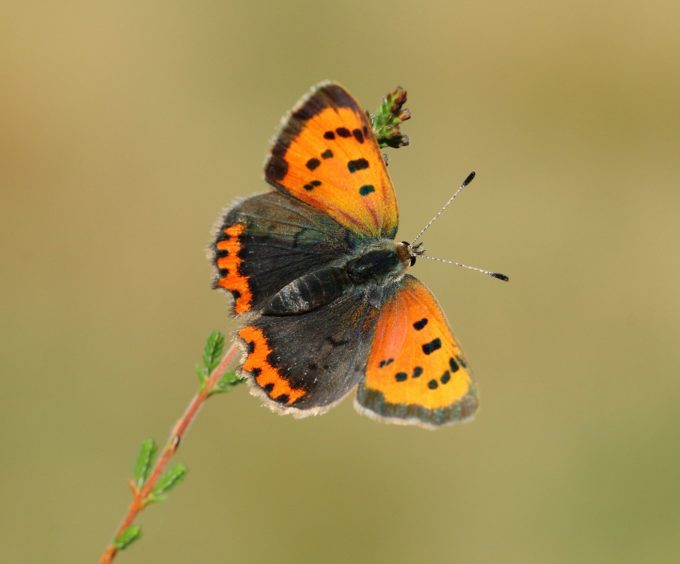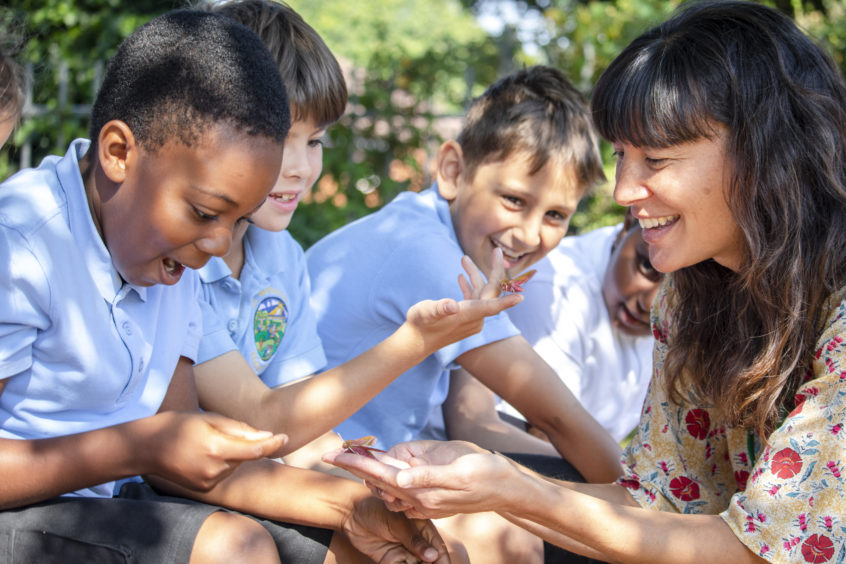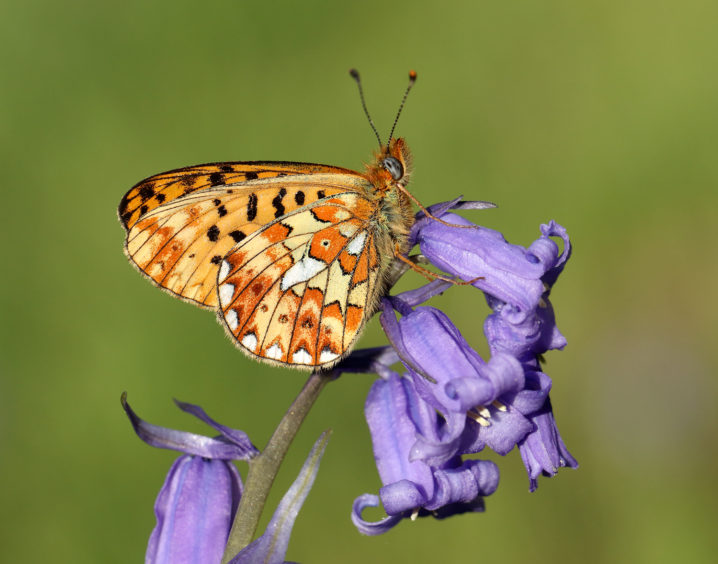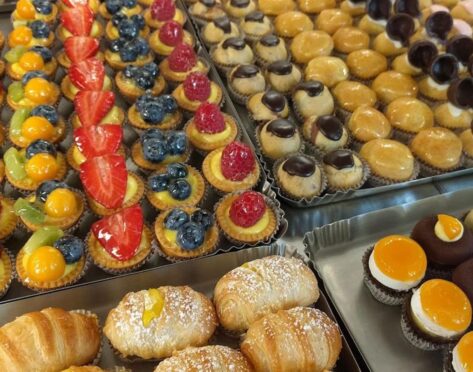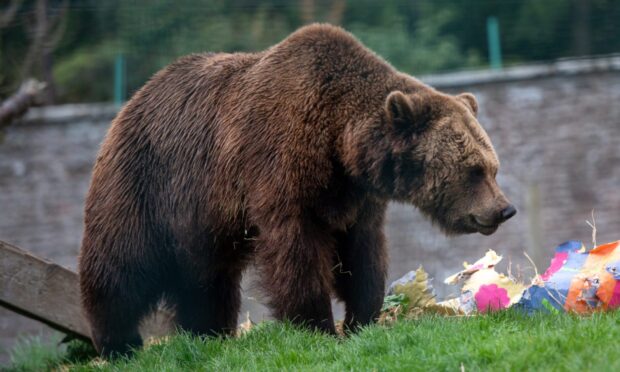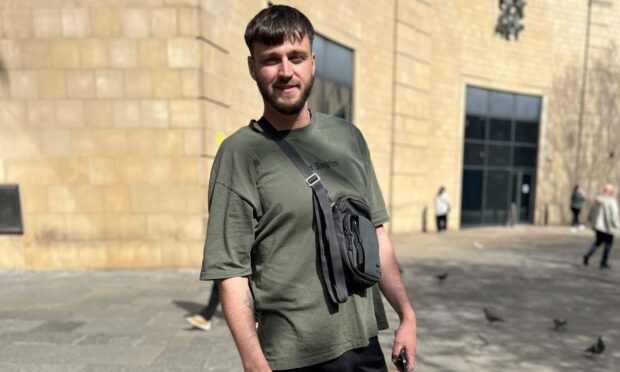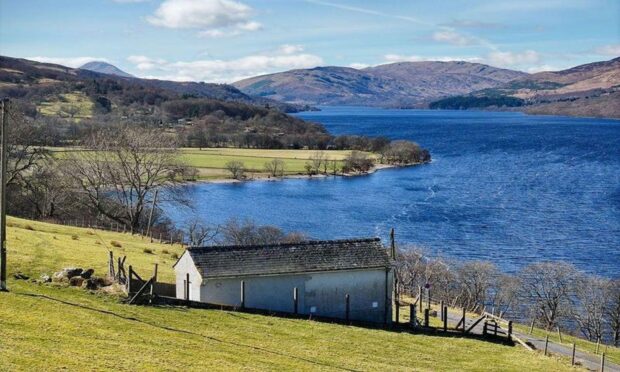Flimsy and fragile they may be but butterflies have stood the test of time: butterfly fossils can be dated back 56 million years, while these delicate, fluttering insects have captured artists’ imaginations for more than 3500 years.
Butterflies and moths are a vital part of our wildlife heritage and are valuable as sensitive indicators of the health of our environment.
But, according to Butterfly Conservation (BC), the stark fact is that populations of butterflies and moths are declining at an alarming rate. The charity was founded in 1968 by a small group of naturalists because of concerns about the plight of butterflies, which was apparent even then.
Anthony McCluskey runs BC’s Helping Hands for Butterflies project, which is all about working with volunteers to identify and record butterflies and create habitats for them in central Scotland.
“The project is funded by the National Lottery Heritage Fund and Scottish Natural Heritage, and over the next few years we aim to involve hundreds of people with the recording and conservation of butterflies in their local areas,” says Anthony.
“We’ve already created new meadows in parks in Edinburgh, Glasgow, Hamilton, Blantyre and Lennoxtown, and over the next few years we’ll keep maintaining those meadows and sowing more seeds.”
The UK has 57 resident species of butterfly – 35 of which are found in Scotland – and two regular migrant species.
“The butterflies which people will be most familiar with are the large, colourful species which come to gardens. These include the peacock and small tortoiseshell which lay their eggs upon stinging nettles.
“These are very active butterflies and can fly great distances, so they regularly stop in gardens to re-fuel from nectar-rich plants.
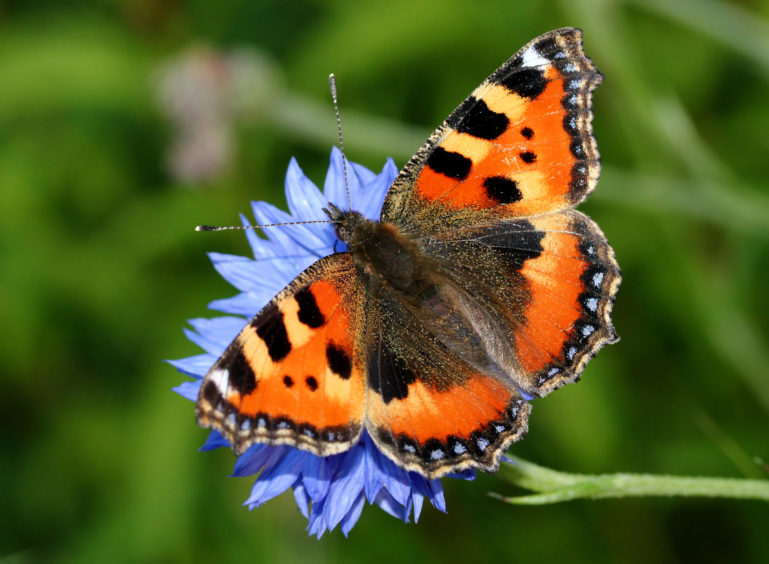
“In springtime one of our commonest species is the orange-tip butterfly which is very easy to identify because of the bright orange tips on the white wings.
“Last summer in Scotland we saw millions of painted lady butterflies arrive from Europe. They will have laid their eggs on plants like thistles, and their offspring will hopefully have made if back to southern Europe or Africa before the winter.”
Three quarters of butterfly species in the UK have declined over the past four decades.
“Much of this is because of habitat loss and changes to how we manage the land. Many of our public greenspaces and gardens have become real deserts for wildlife as they are so intensively managed – there’s often a lot short green grass, but little else,” explains Anthony.
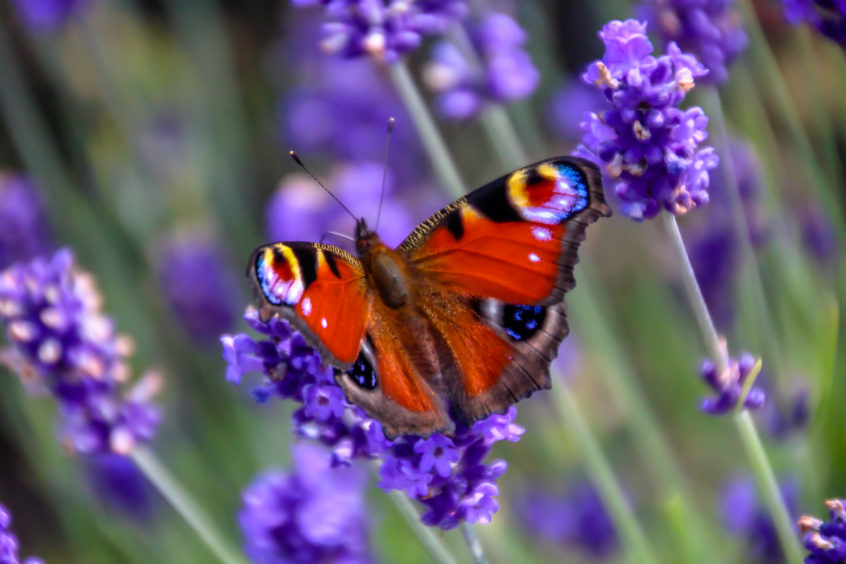
One particular species of butterfly that is in trouble in Scotland is the small copper so BC has launched an appeal to ask people to keep an eye for this small but brightly-coloured butterfly.
Small Copper caterpillars can only feed on a few native wildflowers – mostly common sorrel – so we’re working with land managers to put these wildflowers back into our greenspaces.”
Antony has been passionate about butterflies all his life. “I’ve always loved being outdoors and as a child I looked up to people who could tell me about wildlife – and still do,” he says.
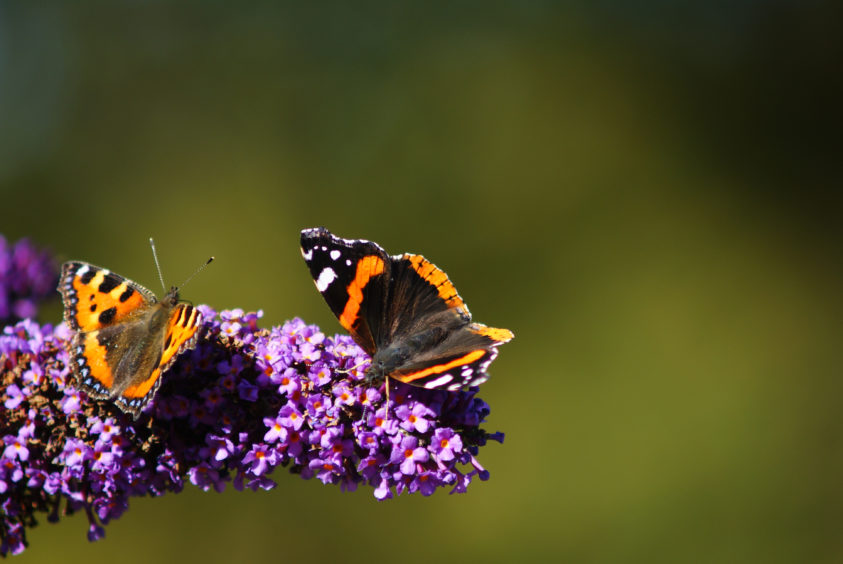
The small copper can be seen in gardens and parks, and also found along paths and cycle routes so it may be spotted on daily exercise outings.
The charity is urging people to respect Government advice on social distancing by only recording the butterfly if they happen to find it as they take their normal exercise, and not to travel anywhere to find it.
Small coppers can often be seen basking in sheltered sunny places, especially where there is some bare ground. Their caterpillars feed on wild sorrels, which are the smaller relatives of the Docks that people use to relieve nettle stings.
With their wings open they are a little larger than a 50p coin, but they are easily overlooked as they are rarely seen in large numbers. The upper sides of the wings have distinctive bright orange and black markings.
Depending on the spring weather the butterfly can emerge in Scotland between the middle of April and middle of June, disappearing until late summer, when a second brood emerges.
Anthony explains the butterfly’s vital role within the ecosystem.
“Butterflies and moths are good pollinators of wildflowers,” he says.
“For example some species of wild orchid found in Scotland can only be pollinated by a few species of moth. They are also hugely important parts of the diets of vertebrate animals like bats and birds. A single nest of blue tits can consume over 40,000 food items, and many of those will be caterpillars of butterflies and moths.
“So if people want to see more birds in their gardens, they need to make space for the insects first.”
So what can we all do to attract more butterflies of all kinds to our gardens?
“We can all make more wild areas in our gardens, which will benefit butterflies and other insects,” advises Anthony.
“Some butterflies will visit gardens to drink nectar from plants like buddleia and sedum, but to really help populations we also need to have plants for their caterpillars.
“Plants like nasturtium and honesty can provide food for several species of white butterfly – and help keep them off your cabbages – while long grass is used by several species of brown and orange butterfly, such as the ringlet,” he continues.
“A mini-meadow is a good idea even for smaller gardens – if you’re not sure, just compare the insects found in a short lawn to an area of grass with wildflowers, and you’ll see the difference!
“Butterflies enrich our lives just by being there. They’re one of the first signs of spring, and I’d challenge anyone not to be delighted by the sight of a beautiful small copper on a sunny day,” observes Anthony.
“We’ve been slowly losing butterflies from our daily lives, but people of a certain age can remember summer days filled with butterflies, and we want that to become a reality for everyone again.
“Small coppers are delightful little butterflies, and their declines in Scotland are a great concern for us and finding out more about where they are can help us to conserve them.”
Observing wildlife is known to have a wide range of mental health benefits: “This can be a mindful activity during these uncertain times and one which will help contribute to scientific research too,” Anthony suggests.”
The charity recognises the importance of working with the younger generation to encourage an interest in butterflies.
“We do a lot of work with younger people through our Munching Caterpillars project, which goes into schools and lets children get up close to butterflies and moths and their caterpillars,” says Anthony. “Barren school grounds have been transformed into havens for insects, and children are shown how to grow their own plants to help butterflies in their local communities.
“I most enjoy passing on my love of wildlife to others during my volunteer training workshops,” he smiles. “For some people it’s the first time they’ve ever learned the name of a butterfly or wildflower, and I’ve seen a transformation in people as this world is made accessible to them.
“I’m honoured that I’m in a position to be able to help people this way.”
One of the biggest challenges BC faces is the perception that public greenspaces must be kept manicured and controlled.
“This way of thinking has been disastrous for insect populations, but thankfully more councils are making changes to benefit wildlife, as local residents are now speaking up and asking for these changes,” says Anthony.
The coronavirus crisis has naturally brought its own distinct challenge to the charity’s work. “It’s meant that almost all of our face-to-face public engagement work has been cancelled.
“Normally between March and May I would have been running lots of workshops to train new volunteers, but that’s not possible now,” he says.
“However, I quickly switched to running an online course and the uptake has been incredible, and I feel confident that the people receiving the training now will be able to put their new skills to use.”
Obsessed with insects since his university a dissertation on bumblebees in the orchards of County Armagh in Northern Ireland, where he’s from, Anthony has been working in insect conservation for more than 10 years now.
“One of my favourite memories of butterflies before I worked for Butterfly Conservation was spending three beautiful days looking for the rare pearl-bordered fritillary with staff at Ben Lawers National Nature Reserve, on a hill overlooking Loch Tay.
“The pearl-bordered fritillary is a favourite of mine as the patterns on the wings are remarkable, but really I find all butterflies incredible to look at, and never tire of it.
“We found the butterfly in the end, but the whole experience reminded me of the things I most enjoy in life,” he smiles.
To record your sightings of the small copper butterfly or to sign up for Anthony’s free online butterfly identification course on BC’s survey page at butterfly-conservation.org
